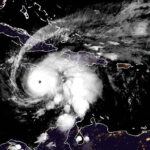Damages from recent strong storms in the mid-Atlantic states could lead to even more damage down the road, with moisture and heat contributing to the growth of mold in homes and other buildings, according to insurance regulators.
Cleaning mold early can prevent problems. Tips on how to clean mold and mildew are available online from the Maryland Department of Health and Mental Hygiene and from other government resources online.
The U.S. Environmental Protection Agency offers information online on mold cleanup and remediation in homes, schools and other large commercial buildings. The Centers for Disease Control and Prevention offers general background information about mold health hazards and mold safety recommendations. The Federal Emergency Management Agency has comprehensive information online about mold remediation.
Some insurance policies specifically exclude coverage for any type of mold damage. Some cover damage if the mold arises from a covered loss, while some policies exclude coverage for any liability claims arising out of mold.
Because coverage for these types of claims varies, Commissioner Goldsmith reminds consumers to read the policy and ask their producer/agent or insurer if there is coverage for mold claims. If there is coverage, find out the circumstances and amount for the coverage.
Some tips for effective cleaning of mold and mildew include:
• Clean, disinfect and dry all affected areas. Use a non-ammonia soap (ammonia plus bleach will result in toxic fumes) or detergent and hot water to scrub contaminated areas.
• Bag and dispose of materials with moldy residue, such as rags, paper, leaves and debris. Hard-surfaced materials can be kept once they are cleaned and disinfected.
• Use a stiff brush on masonry walls and similar surfaces. Rinse with clean water. After cleaning, apply a solution of one cup of household bleach per one gallon of water and allow it to dry.
• Ventilate the area well before, during and after entering work area.
• Turn off utilities.
• Wear a paper mask, coveralls, waterproof gloves and goggles while cleaning.
• Clean yourself with disinfectant soap when you are done.
• Call in a licensed contractor if wall interiors and sub-flooring areas seem to be the source of the fungal problems.
Was this article valuable?
Here are more articles you may enjoy.


 Hurricane Melissa Churns Toward Jamaica as Category 5 Storm
Hurricane Melissa Churns Toward Jamaica as Category 5 Storm  The Hartford Q3 Net Income Up 41%
The Hartford Q3 Net Income Up 41%  Starr Acquiring IQUW; Starr Managing Agency to Be Among 10 Largest at Lloyd’s
Starr Acquiring IQUW; Starr Managing Agency to Be Among 10 Largest at Lloyd’s  ‘Catastrophic’ Hack Underscores Public Defender Security Gaps
‘Catastrophic’ Hack Underscores Public Defender Security Gaps 

